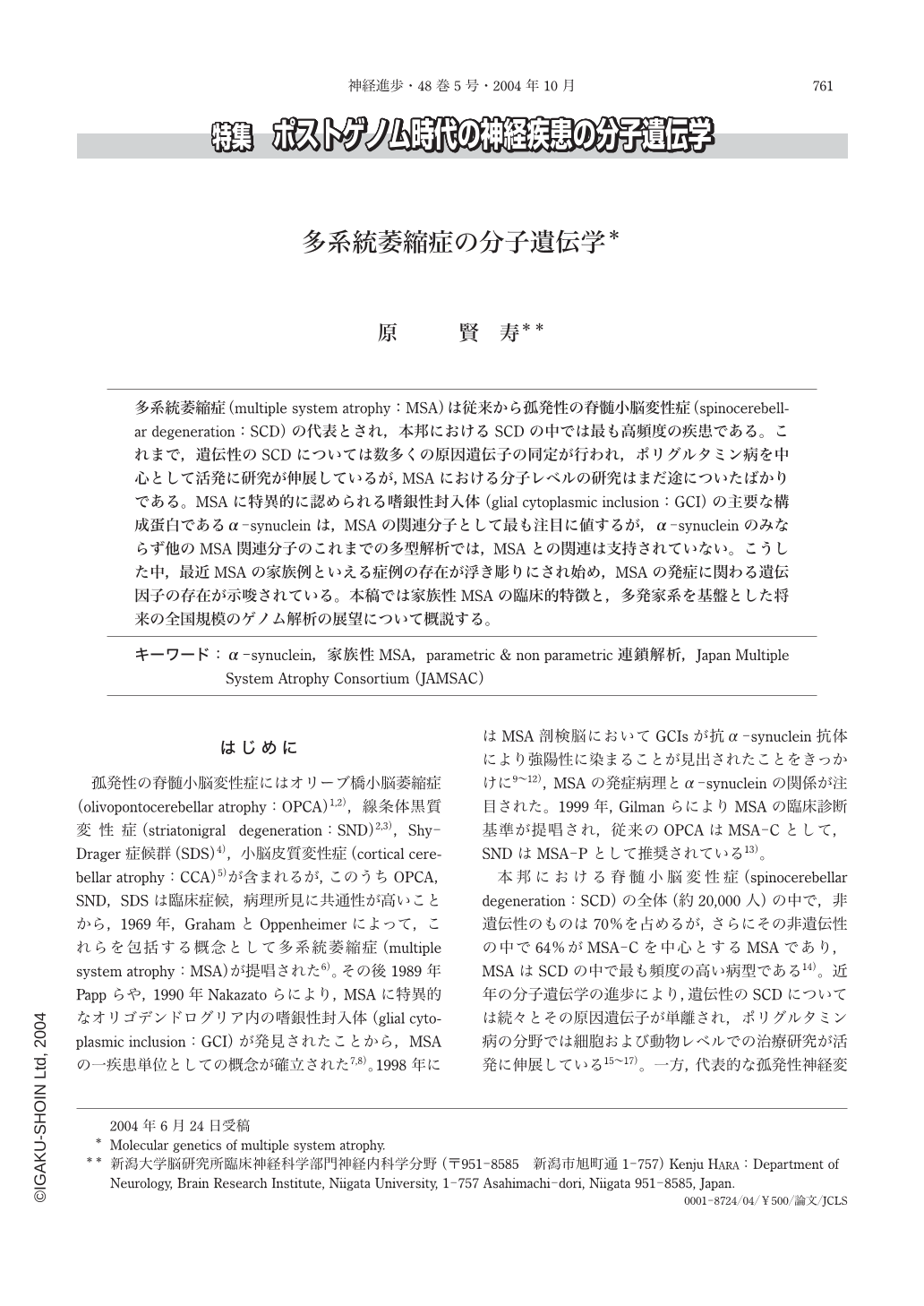Japanese
English
- 有料閲覧
- Abstract 文献概要
- 1ページ目 Look Inside
多系統萎縮症(multiple system atrophy:MSA)は従来から孤発性の脊髄小脳変性症(spinocerebellar degeneration:SCD)の代表とされ,本邦におけるSCDの中では最も高頻度の疾患である。これまで,遺伝性のSCDについては数多くの原因遺伝子の同定が行われ,ポリグルタミン病を中心として活発に研究が伸展しているが,MSAにおける分子レベルの研究はまだ途についたばかりである。MSAに特異的に認められる嗜銀性封入体(glial cytoplasmic inclusion:GCI)の主要な構成蛋白であるα-synucleinは,MSAの関連分子として最も注目に値するが,α-synucleinのみならず他のMSA関連分子のこれまでの多型解析では,MSAとの関連は支持されていない。こうした中,最近MSAの家族例といえる症例の存在が浮き彫りにされ始め,MSAの発症に関わる遺伝因子の存在が示唆されている。本稿では家族性MSAの臨床的特徴と,多発家系を基盤とした将来の全国規模のゲノム解析の展望について概説する。
Multiple system atrophy(MSA)has been considered to be a representative of sporadic spinocerebellar degeneration(SCD), and is the most common form of SCD in Japan. To date, many causative genes of hereditary SCDs have been identified, and research regarding these genes, particularly those causing polyglutamine disease, have been pursued actively. However, we have just started the molecular analyses of MSA. Although alpha-synuclein, a major component of glial cytoplasmic inclusions(GCIs), which are the hallmark of MSA, is worthy of attention as a molecule associated with MSA, the relation between the polymorphism of the candidate genes including alpha-synuclein and other molecules associated with MSA, and susceptibility to MSA is unclear despite of the polymorphic analyses of these genes. Recently, we have identified familial cases of MSA, suggesting the presence of genetic components in MSA. In this article, clinical features of familial MSA and a nationwide genome analysis on the basis of multiplex families of MSA that will be conducted in the future are discussed.

Copyright © 2004, Igaku-Shoin Ltd. All rights reserved.


